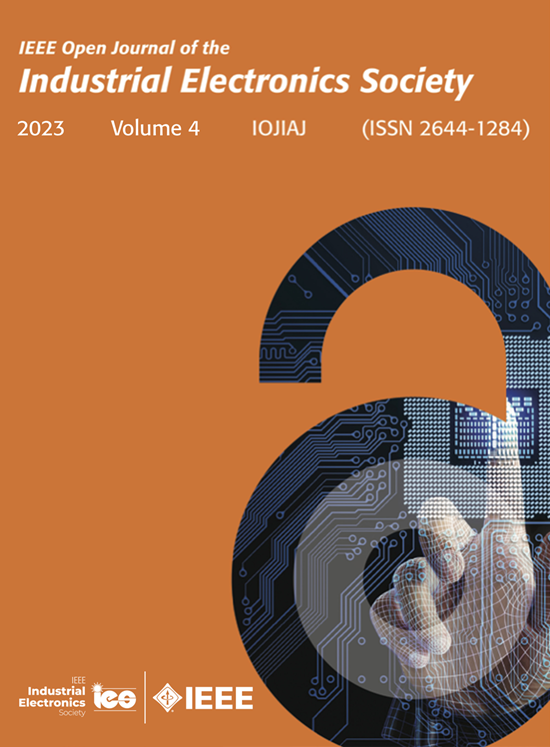A Tuning Method for the Supplementary Voltage Controller of Dual-Side Grid Forming Converters in Distributed Storage Systems
IF 4.3
Q1 ENGINEERING, ELECTRICAL & ELECTRONIC
IEEE Open Journal of the Industrial Electronics Society
Pub Date : 2025-01-23
DOI:10.1109/OJIES.2025.3533022
引用次数: 0
Abstract
Utility-scale battery energy storage systems (BESSs) are currently being used to provide auxiliary services, such as frequency regulation, peak shaving, or grid balancing, among others. Hybrid ac/dc distribution grids where the BESS systems are connected in the dc side and the dc/ac interface is implemented through a grid forming (GF) converter are currently researched. These solutions combine the benefits given by the dc distribution and the possibility to provide emulated inertia and damping to the system through the use of GF control techniques. This article presents a novel tuning method, based on small signal analysis, for the configuration parameters of a dual-side GF controller. It aims to minimize the dynamic performance difference between the dual-side and ideal GF controllers, thus ensuring that the dual-side GF provides the expected support to the grid in terms of inertia, damping and primary response, while simultaneously controlling the dc voltage. This is achieved through the optimum tuning of the supplementary dc voltage regulator embedded in the dual-side GF controller. Real-time estimation of the optimum controller gains by making use of an artificial neural network is proposed. Simulation and experimental results are presented to validate the method.分布式存储系统中双侧并网变流器补充电压控制器的整定方法
公用事业规模的电池储能系统(bess)目前被用于提供辅助服务,如频率调节、调峰或电网平衡等。目前研究的是混合交直流配电网,其中BESS系统在直流侧连接,并通过网格形成(GF)变换器实现dc/ac接口。这些解决方案结合了直流分布带来的好处,以及通过使用GF控制技术为系统提供模拟惯性和阻尼的可能性。本文提出了一种基于小信号分析的双侧GF控制器组态参数整定方法。其目的是尽量减少双面GF控制器与理想GF控制器之间的动态性能差异,从而保证双面GF在控制直流电压的同时,在惯量、阻尼和一次响应方面为电网提供预期的支持。这是通过对嵌入在双侧GF控制器中的补充直流稳压器进行最佳调谐来实现的。提出了利用人工神经网络实时估计最优控制器增益的方法。仿真和实验结果验证了该方法的有效性。
本文章由计算机程序翻译,如有差异,请以英文原文为准。
求助全文
约1分钟内获得全文
求助全文
来源期刊

IEEE Open Journal of the Industrial Electronics Society
ENGINEERING, ELECTRICAL & ELECTRONIC-
CiteScore
10.80
自引率
2.40%
发文量
33
审稿时长
12 weeks
期刊介绍:
The IEEE Open Journal of the Industrial Electronics Society is dedicated to advancing information-intensive, knowledge-based automation, and digitalization, aiming to enhance various industrial and infrastructural ecosystems including energy, mobility, health, and home/building infrastructure. Encompassing a range of techniques leveraging data and information acquisition, analysis, manipulation, and distribution, the journal strives to achieve greater flexibility, efficiency, effectiveness, reliability, and security within digitalized and networked environments.
Our scope provides a platform for discourse and dissemination of the latest developments in numerous research and innovation areas. These include electrical components and systems, smart grids, industrial cyber-physical systems, motion control, robotics and mechatronics, sensors and actuators, factory and building communication and automation, industrial digitalization, flexible and reconfigurable manufacturing, assistant systems, industrial applications of artificial intelligence and data science, as well as the implementation of machine learning, artificial neural networks, and fuzzy logic. Additionally, we explore human factors in digitalized and networked ecosystems. Join us in exploring and shaping the future of industrial electronics and digitalization.
 求助内容:
求助内容: 应助结果提醒方式:
应助结果提醒方式:


